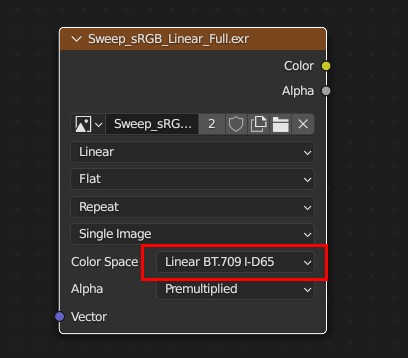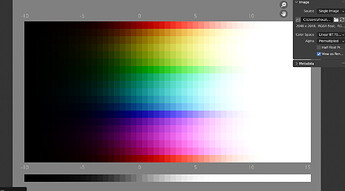I tried implementing a 3DLUT in python now.
Please advice what settings to use. This is just the simplest possible linear sweep using my old parameters. From what I’ve read, there are certain shaped sweeps that might perform better. I also don’t know what range or resolution is appropriate. Currently this is silly in that it only works for XYZ values up to 1.07. Clearly they could be much larger. So this is more a proof of principle than anything.
import colour
import numpy as np
def subtract_mean(col):
mean = np.mean(col)
return col - mean, mean
def add_mean(col, mean):
return col + mean
def cart_to_sph(col):
r = np.linalg.norm(col)
phi = np.arctan2(col[1], col[0])
rho = np.hypot(col[0], col[1])
theta = np.arctan2(rho, col[2])
return np.array([r, phi, theta])
def sph_to_cart(col):
r = col[0]
phic = np.cos(col[1])
phis = np.sin(col[1])
thetac = np.cos(col[2])
thetas = np.sin(col[2])
x = r * phic * thetas
y = r * phis * thetas
z = r * thetac
return np.array([x, y, z])
def compress(val, f1, fi):
fiinv = 1 - fi
return val * fi/(1 - fiinv * np.power(((f1*fiinv)/(f1-fi)), -val))
def transform(col, f1, fi):
col, mean = subtract_mean(col)
col = cart_to_sph(col)
col[0] = compress(col[0], f1=f1, fi=fi)
col = sph_to_cart(col)
return add_mean(col, mean)
def main():
f1 = 0.9
fi = 0.8
LUT = colour.LUT3D(name='Spherical Saturation Compression')
LUT.domain = ([[-0.07, -0.07, -0.07], [1.09, 1.09, 1.09]])
LUT.comments = [f'Spherically compress saturation by a gentle curve such that very high saturation values are reduced by {((1-fi)*100):.1f}%',
f'At a spherical saturation of 1.0, the compression is {((1-f1)*100):.1f}%']
x, y, z, _ = LUT.table.shape
for i in range(x):
for j in range(y):
for k in range(z):
col = np.array(LUT.table[i][j][k], dtype=np.longdouble)
col = transform(col, f1=f1, fi=fi)
LUT.table[i][j][k] = np.array(col, dtype=LUT.table.dtype)
colour.write_LUT(LUT, "Saturation_Compression.cube")
print(LUT.table)
print(LUT)
if __name__ == '__main__':
try:
main()
except KeyboardInterrupt:
pass
The file this created is:
Saturation_Compression.cube (1.1 MB)
and the following description:
LUT3D - Spherical Saturation Compression
----------------------------------------
Dimensions : 3
Domain : [[-0.07 -0.07 -0.07]
[ 1.09 1.09 1.09]]
Size : (33, 33, 33, 3)
Comment 01 : Spherically compress saturation by a gentle curve such that very high saturation values are reduced by 20.0%
Comment 02 : At a spherical saturation of 1.0, the compression is 10.0%







